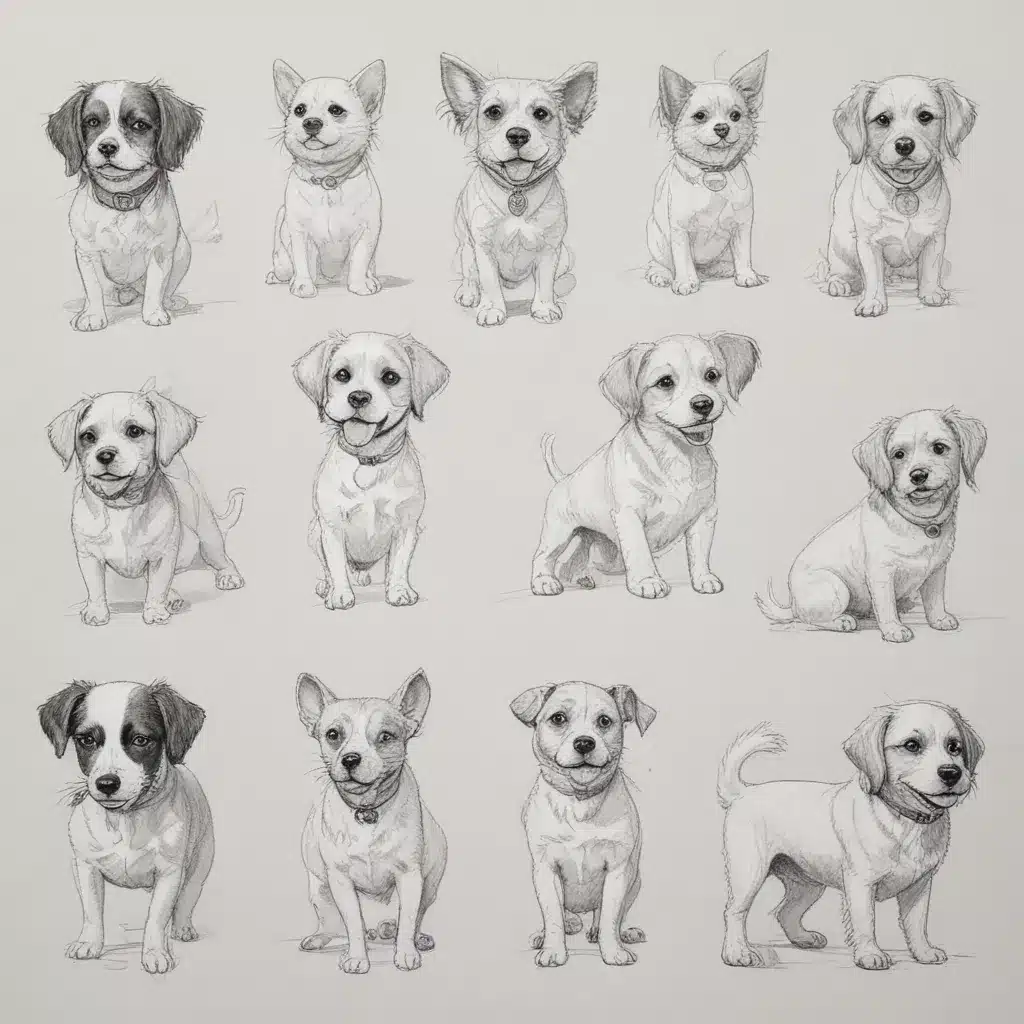
In the ever-evolving world of art, the power to capture the essence of life lies not only in grand, sweeping statements but also in the simple, everyday moments that fill our world. As an experienced art writer and creative consultant, I’m excited to explore the thrilling possibilities of sketching pets in motion—a practice that can elevate the mundane into the sublime.
Observing the Everyday
One of the fundamental principles of artistic expression is the ability to find beauty in the ordinary. Too often, we become so caught up in the whirlwind of daily life that we fail to notice the captivating movements and subtle nuances that unfold around us. However, by adopting a mindset of “mindful awareness,” we can train our eyes to see the world anew, uncovering a wealth of inspiration in the most unexpected places.
Take, for example, the playful antics of a beloved household pet. Whether it’s a frolicking puppy, a graceful feline, or a mischievous ferret, these creatures offer a never-ending source of creative inspiration. Their fluid movements, expressive faces, and unique personalities provide a rich tapestry for the artist to explore.
Interpreting Animal Movement
At the heart of capturing pets in motion lies a deep understanding of rhythm and tempo. Each animal possesses its own distinct cadence, from the lightning-fast pounces of a cat to the languid, swaying gait of a dog. By observing these patterns, you can begin to translate the energy and dynamism of your subject onto the page.
One valuable exercise is to start with quick gesture drawings, focusing on the overall flow and energy of the pet’s movement. Rapid, fluid strokes can capture the essence of a moment, allowing you to distill the essence of your subject into its most primal form. As you progress, you can then move towards more detailed renderings, honing in on specific details and textures that bring your pet to life.
Depicting Personality
Pets are not merely physical beings; they are complex creatures with distinct personalities and quirks. Capturing this elusive quality on the page is a true test of an artist’s skill and sensitivity.
Begin by observing your subject’s expressions — the subtle twitches of an ear, the playful gleam in the eye, the tension in the muscles as they prepare to pounce. These small details can reveal volumes about your pet’s inner world, allowing you to convey their unique character through your art.
Additionally, consider the environment and setting in which your pet exists. Is your subject chasing a toy in a sun-dappled backyard, or curled up in a cozy nook by the fireplace? The choices you make regarding lighting, background, and context can profoundly shape the mood and atmosphere of your work, amplifying the emotional resonance of your pet’s portrayal.
Experimental Mediums
While pencil sketching remains a timeless and versatile medium, the world of art is rife with experimental techniques that can breathe new life into your pet portraits. Consider incorporating mixed media elements, such as ink washes, watercolor splashes, or even collaged textures, to add depth and visual interest to your compositions.
Alternatively, you might explore the use of alternative drawing implements, such as charcoal, pastels, or even ballpoint pens. Each material offers its own unique properties and expressive qualities, allowing you to discover new ways of channeling the energy and vibrancy of your pet subjects.
Mastering the Fundamentals
Underpinning all of these creative approaches is a solid understanding of fundamental art and design principles. Concepts such as composition, framing, and color theory play a crucial role in elevating your pet portraits, guiding the viewer’s eye and evoking the desired emotional response.
For instance, the strategic placement of your subject within the frame, following the rule of thirds, can create a sense of balance and tension. Similarly, the thoughtful selection of a complementary color palette can amplify the inherent qualities of your pet, whether that be the rich, warm tones of a golden retriever or the sleek, striking hues of a black cat.
Drawing from Life
Perhaps the most invaluable practice for any artist seeking to master the art of pet portraiture is drawing from life. By immersing yourself in the presence of your furry, feathered, or scaled subjects, you can develop a deeper understanding of their movement, behavior, and unique characteristics.
Set aside time to observe your pets in their natural environments, capturing quick sketches and studies that explore the nuances of their form and expression. As you become more attuned to the rhythms and subtleties of their being, you’ll find that your ability to translate these qualities onto the page will grow exponentially.
Elevating the Everyday
At the heart of this journey lies the profound joy of elevating the everyday into something extraordinary. By training our eyes to see the beauty in the mundane, we unlock a wellspring of creative potential, transforming the simple, familiar moments of our lives into works of art that captivate and inspire.
So, the next time you witness your beloved pet in motion, don’t just passively observe — reach for your sketchbook and immerse yourself in the dance. Capture the energy, the personality, the sheer essence of your subject, and watch as the everyday becomes a canvas for your artistic expression.
After all, as the renowned Val Head, Principal Designer at Adobe, so eloquently states, “The more senior your role, the more potential you have to affect team culture, even if you’re not a manager.” So too can the artist’s role be to elevate the ordinary into the extraordinary, casting a new light on the world around us.
Ready to embark on your own pet sketching adventure? Pencil and Paint Muse is here to guide you every step of the way, offering a wealth of resources, tutorials, and inspiration to help you bring your furry, feathered, and scaly friends to life on the page. Let’s get sketching!
Example: Modern Abstract Painting Series 2024